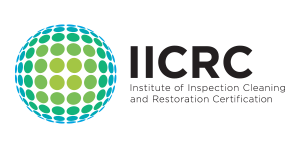Indicators on Dry Star Restoration You Should Know
Table of ContentsWhat Does Dry Star Restoration Do?10 Easy Facts About Dry Star Restoration ShownThe Buzz on Dry Star RestorationThe Ultimate Guide To Dry Star RestorationThe Buzz on Dry Star Restoration
Within mins, the kitchen was ablaze, creating considerable damages and calling for months of restoration job. Specifically in winter months, home heating systems are a common fire hazard. Malfunctioning circuitry or positioning heating units as well near combustible products like drapes can ignite a fire. Constantly keep heating systems away from anything that can melt and inspect them consistently.
Stats: According to the National Fire Security Organization, family chemicals are responsible for a significant portion of home fires each year. By recognizing these usual causes, you can take actions to make your home more secure.
An Unbiased View of Dry Star Restoration

Key concerns consist of: Water Invasion: Water can seep into walls, floors, and furniture. This can weaken the structural stability of your home. Build Growth: If water is moist quickly, mold can start to expand within 24-48 hours. Mold can trigger health and wellness issues and more damages to your home. Architectural Weakening: Water can deteriorate wood structures and create metal components to rust, making your home unsafe.
It's essential to address all these facets to completely recover your home. Next off, we will dive into the actions associated with the fire damages remediation process. Fire reconstruction is the process of cleansing, repairing, and recovering a residential property that has actually been harmed by fire. The goal is to return the building to its pre-loss condition, indicating it looks and operates as it did prior to the fire.
The Ultimate Guide To Dry Star Restoration
Particles Removal and Demolition: Damaged products are securely gotten rid of, and any type of hazardous materials like asbestos are managed appropriately. Cleaning up and Decontamination: Residue and smoke odors are eliminated using specific equipment and therapies. Repair and Repairs: Finally, the property is rebuilt and restored, consisting of architectural fixings and indoor repair - water damage restoration mesa. Fire damages includes several kinds of damage to a residential or commercial property: Physical Damages: This includes charring, blackening, and fragmentation of materials straight impacted by the fire.
Water Damage: Water used to snuff out the fire can result in structural weakening and mold growth if not effectively handled. Fire reconstruction specialists utilize specialized methods and tools to attend to all these kinds of damage, ensuring the property is secure and habitable once more. Next, we will certainly study the steps associated with the fire damages remediation procedure.
From cutting edge water extraction tools to specialized devices for smoke and residue removal, we have actually the resources needed to recover your residential property to its pre-loss condition. Our methods are created to be complete and efficient, lessening more damage and quickening the recovery process. Our group is composed of accredited specialists who are experts in fire damages remediation.
Unknown Facts About Dry Star Restoration
Their knowledge ensures that every job is done right, giving you with peace of mind during a hard time. If you require fire damage restoration solutions, additional info do not think twice to contact us. We're here to aid you restore your home and your life after the fire. Last edited on 15th of July 2024.
(https://www.mixcloud.com/dryst4rrstrtn/)If there's a fire, smoke makes sure to comply with. While the fire's smoke is made up of elements that make your home unsafe to be in, the damages smoke leaves doesn't stop there. Smoke will certainly drift to relatively every component of your home, sticking to furniture, style, curtains, walls, ceilings, floorings, and a lot more.
The water will saturate into the charred materials and infected other locations of the home untouched by the fire. If left unchecked or missed throughout fire damage reconstruction, the water damages will just aggravate with time and can result in mold and mildew growth, safety issues for your home's structure, and unsightly appearances around your space, consisting of deformed floor covering, peeling off paint, and visible stains.
Top Guidelines Of Dry Star Restoration
Water mitigation is often the primary step of the fire, smoke, and water damage restoration procedure after a damage control has been finished. This addresses the water damages head-on and includes actions to avoid additional troubles for your area before, during, and after repair. Assessment and damage control to evaluate the level of water damageIsolation of water damage to impacted locations to ban water from infecting dry areasInspection of your home's foundation for structural stabilityExtraction of any standing water from the propertyStructural drying out with commercial-grade equipmentSite clean-up that will certainly eliminate particles, pack out salvageable content for restoration, and give way for restoration servicesWe'll also finish added damage reduction by boarding up busted windows and doors, applying tarpaulins to openings in roofings, and completing other actions to stop added damage and threats to your home while the fixings are happening.
The majority of terms and summaries used by water and fire damages restoration service providers are relatively obvious. The list of terms below ought to be of aid when you're interacting with the firm you've worked with. Any action required to protect against the development and spreading of fungus, mold and mildew, mildew, and spores. This can consist of using solvents or chemicals as additives or obstacles on building materials to stop fungi development.